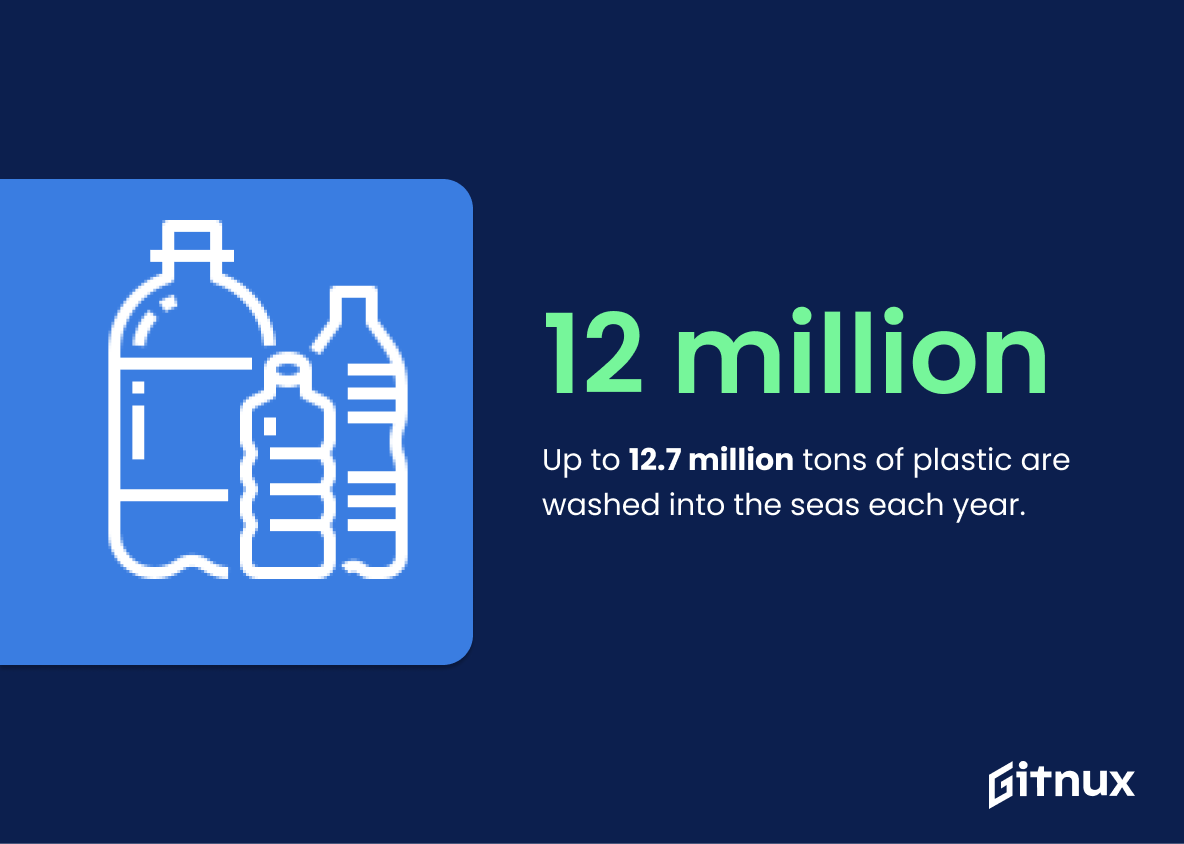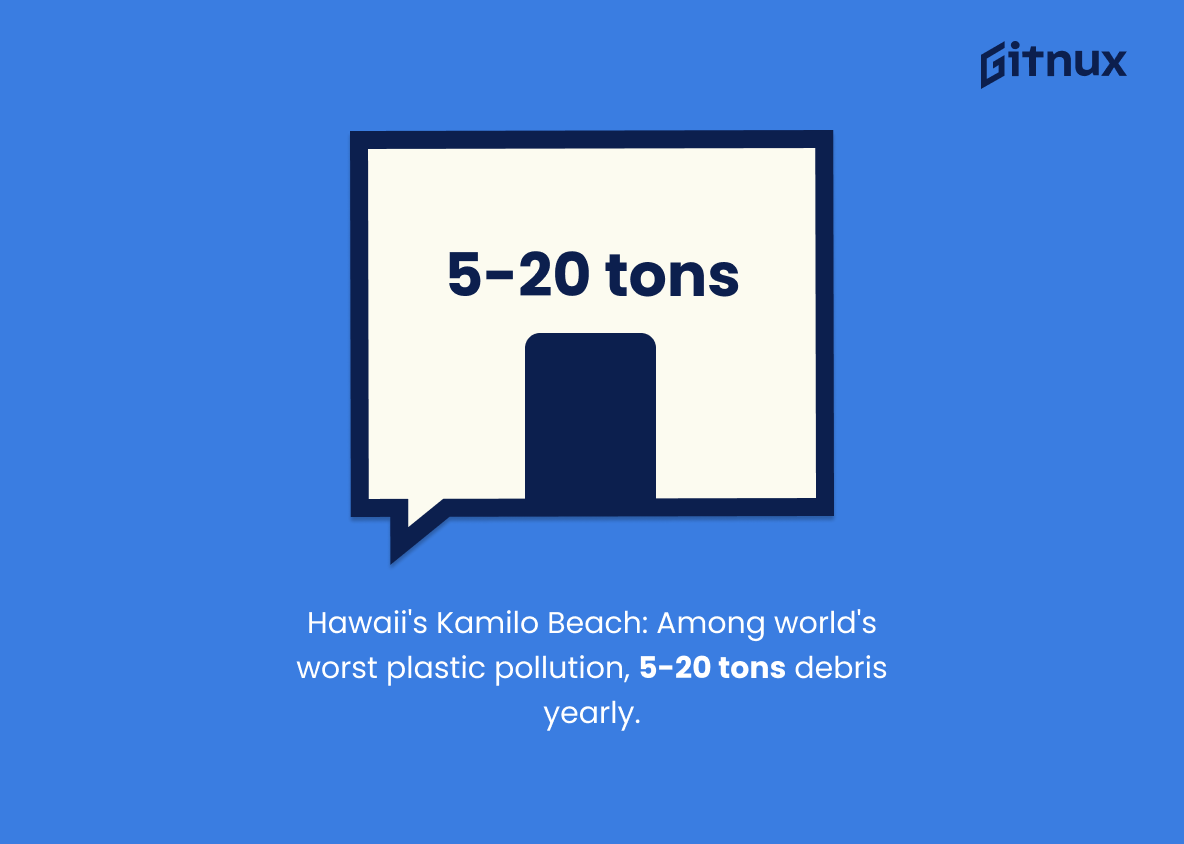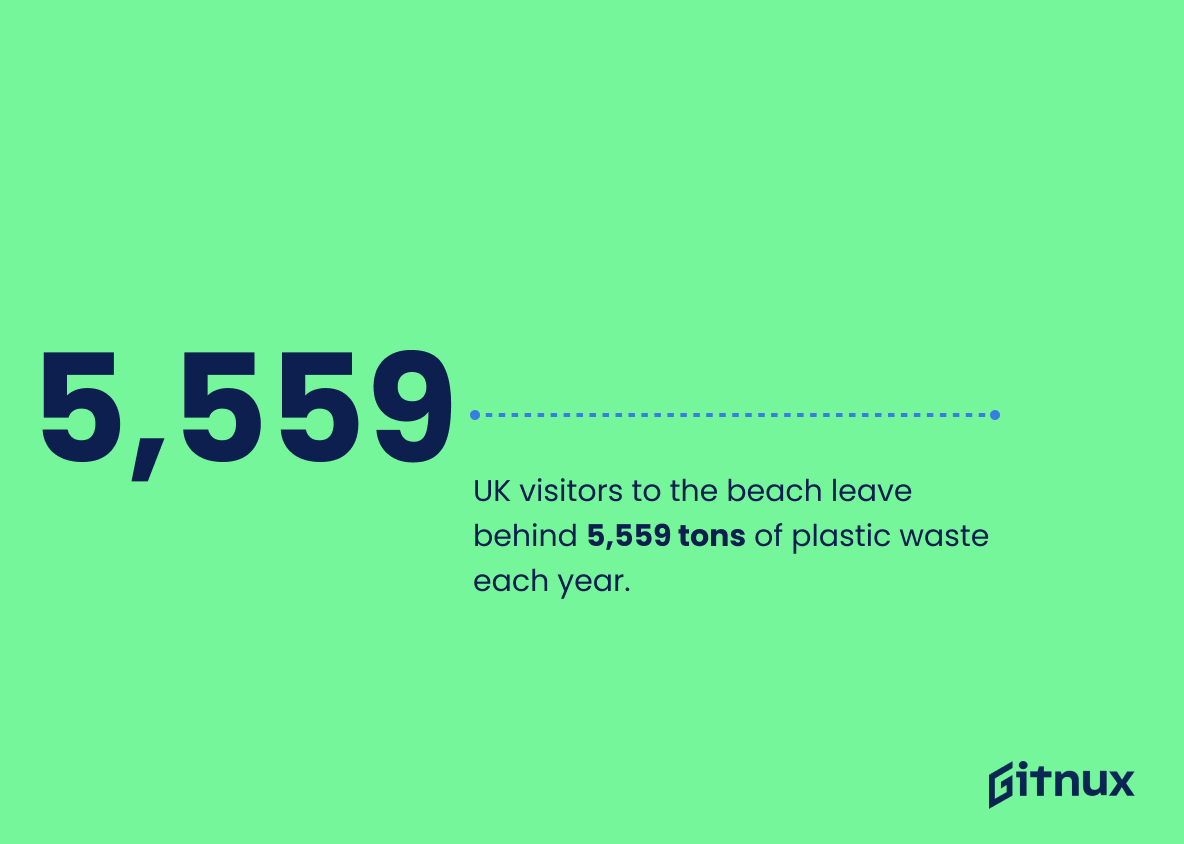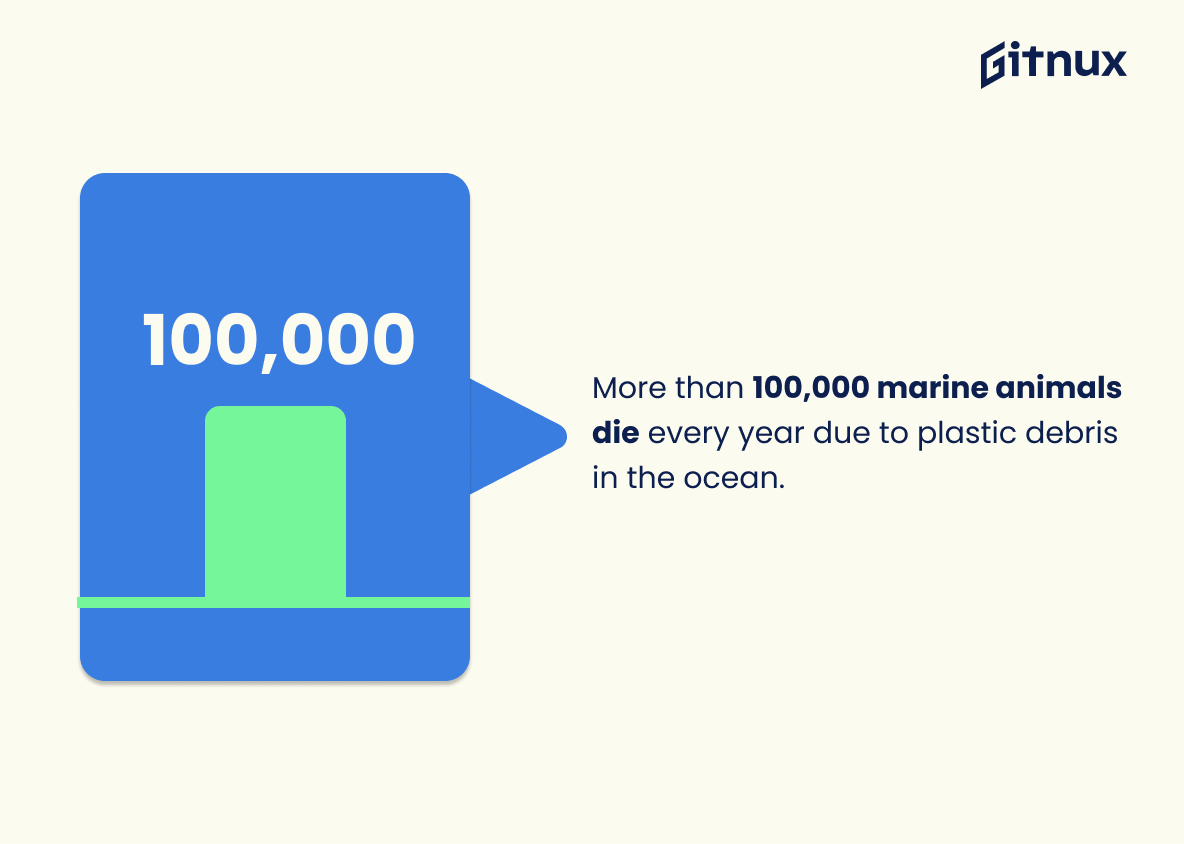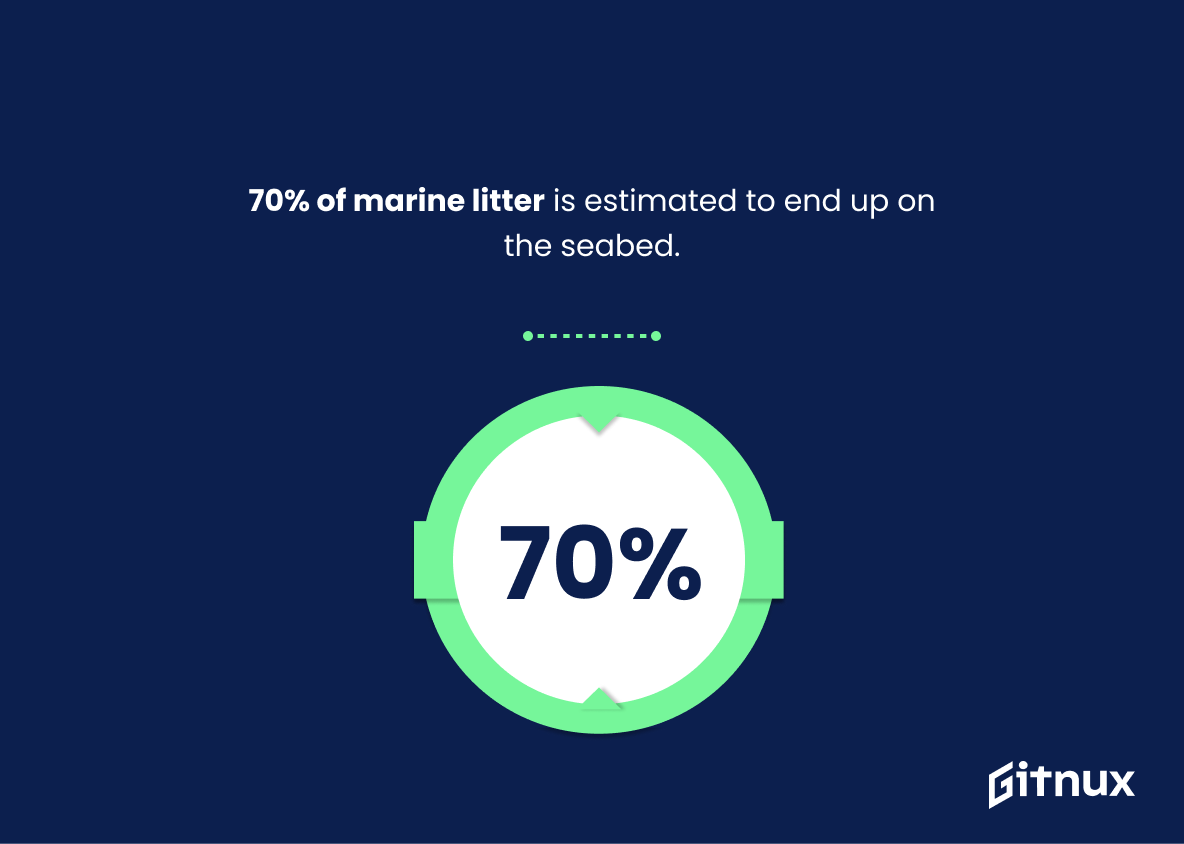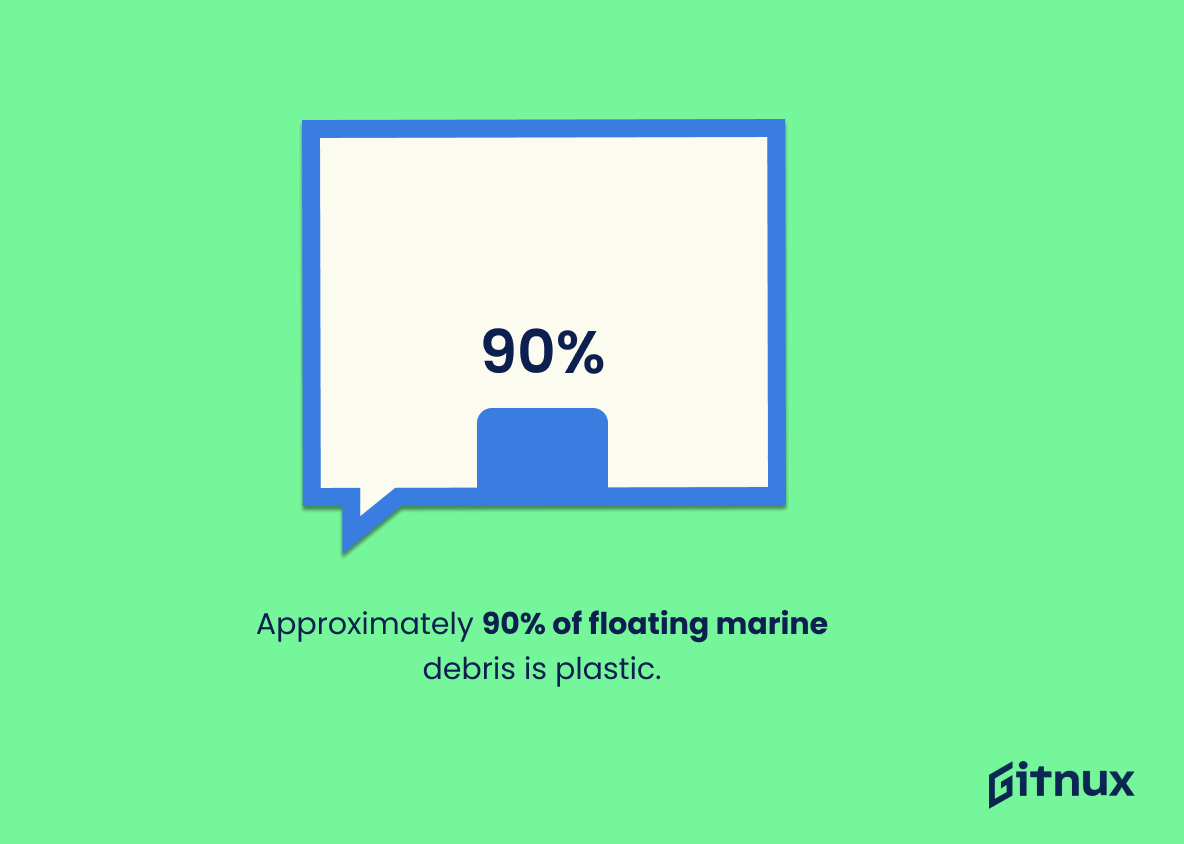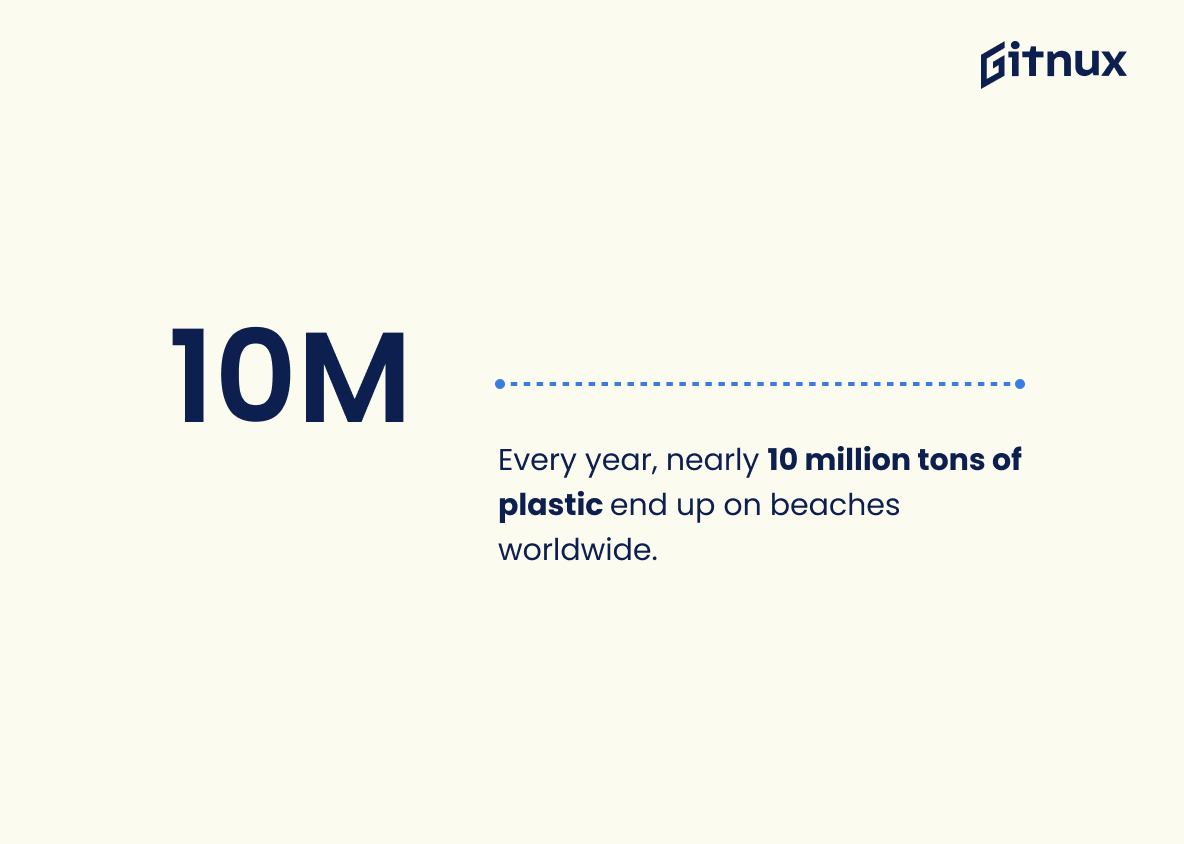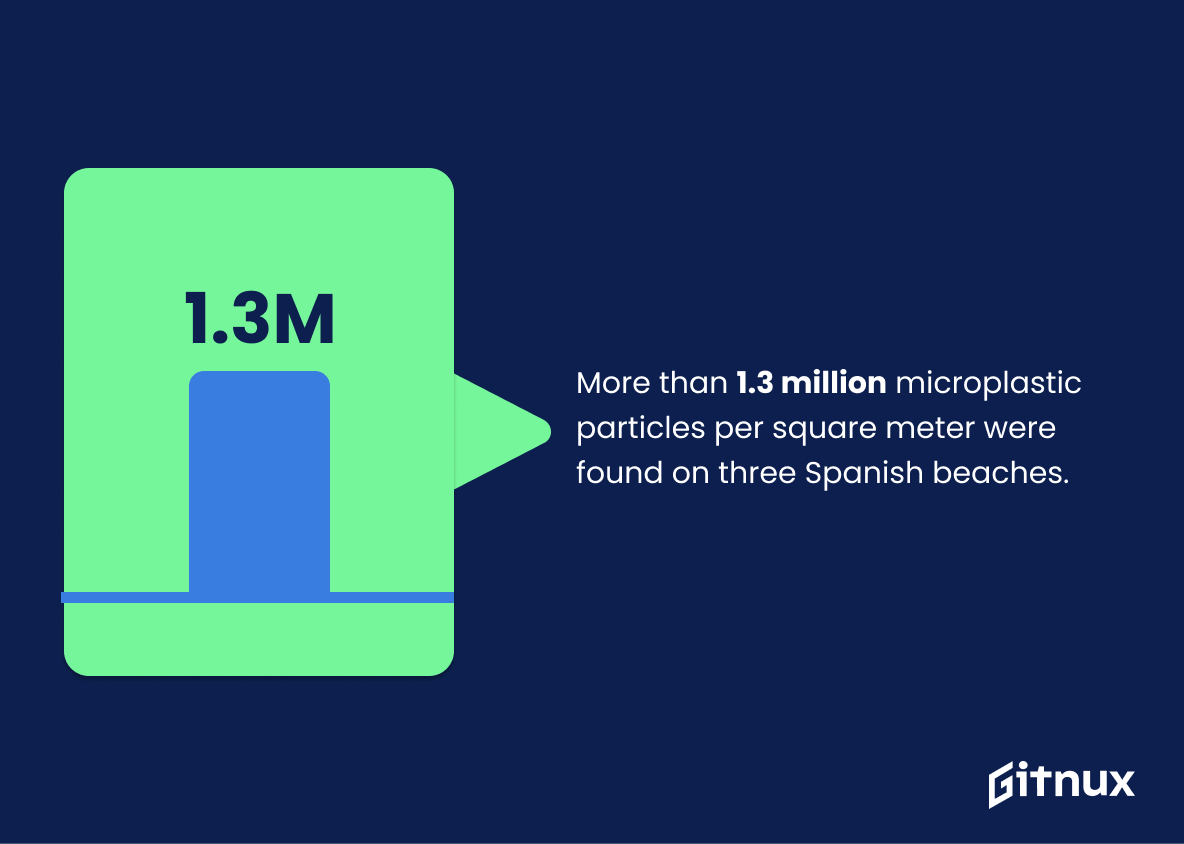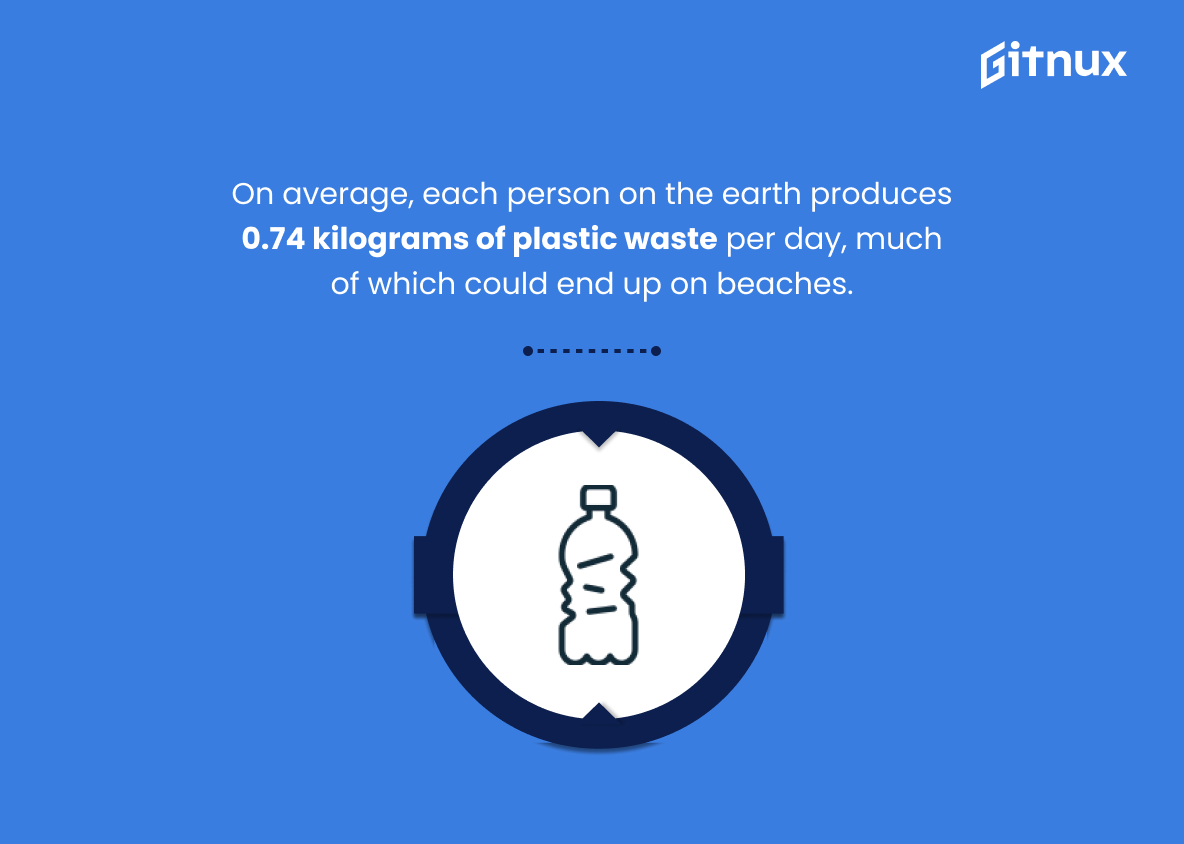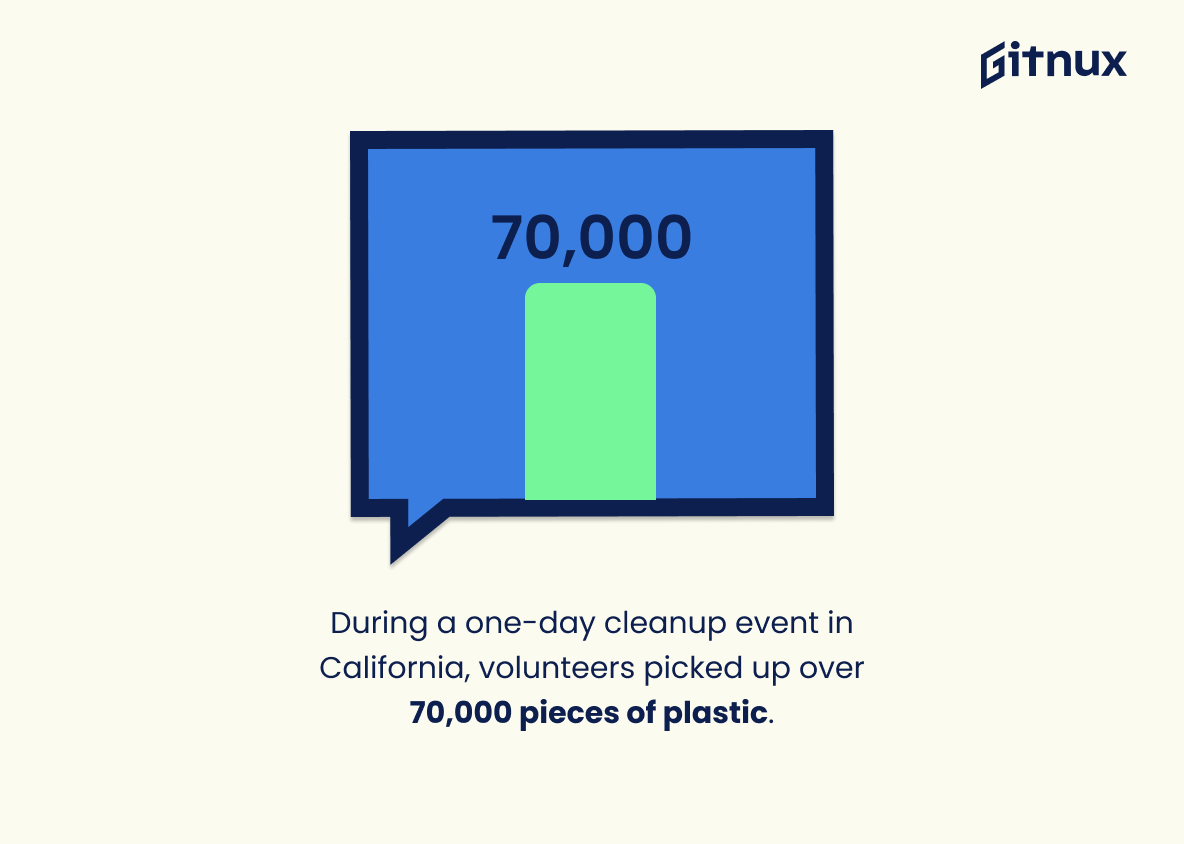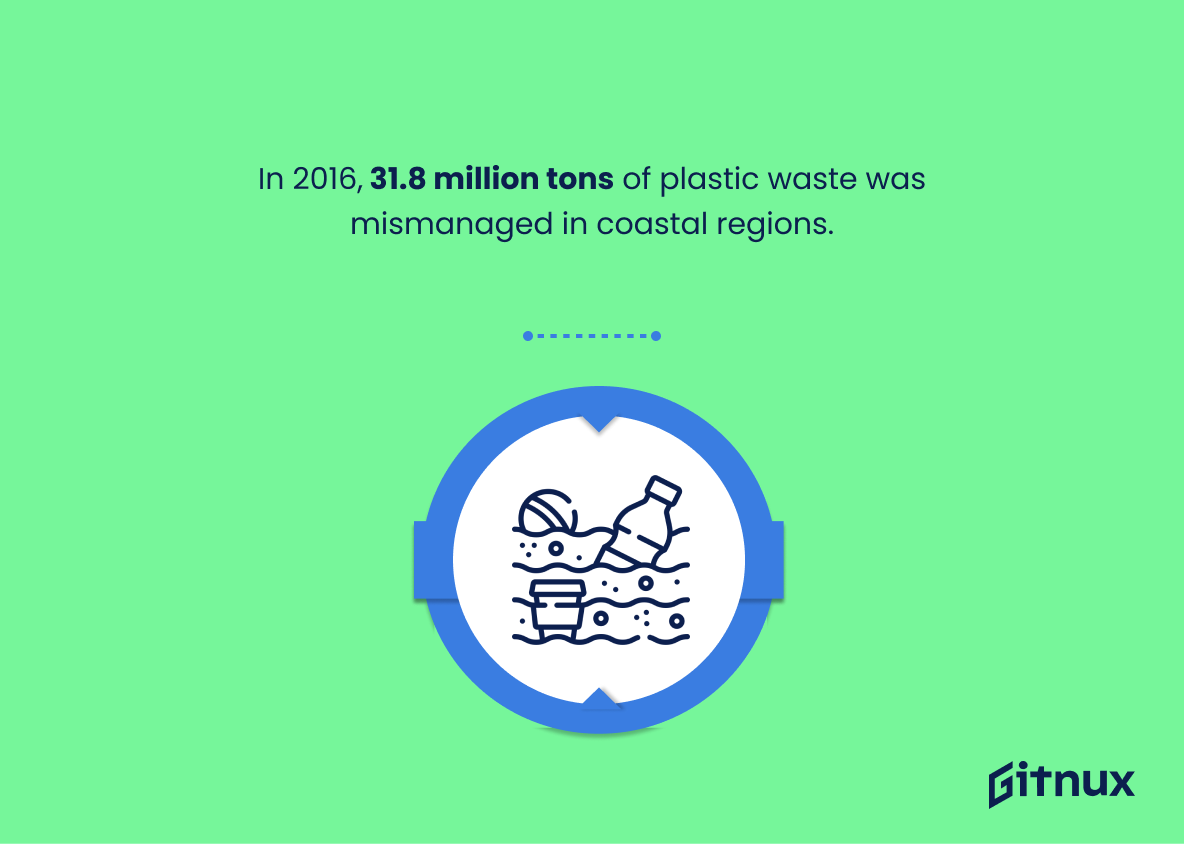Beach vacations frequently conjure up images of crystal clear waters, pristine sands, and awe-inspiring sunsets. However, the escalating reality of beach pollution disrupts this idyllic picture. With billions of pounds of trash and harmful debris seeping into our oceans each year, both our environment and the marine life it supports are under immense strain. In this blog post, we will delve into the unsettling world of beach pollution statistics, and unearth the significant, often overlooked, impact of our careless actions on these magnificent ecosystems. Our aim is not to ruin your next seaside vacation, but rather to shed light on an issue that demands immediate attention, and hopefully, inspire you to be a part of the solution.
The Latest Beach Pollution Statistics Unveiled
Up to 12.7 million tons of plastic are washed into the seas each year.
From captivating coastal views to thrilling water sports, our beaches offer much more than just a pleasing backdrop. However, the startling revelation of up to 12.7 million tons of plastic finding its way into our seas annually is an environmental red flag that must be addressed. This figure paints a grim picture of the health of our marine ecosystems, unraveling a tale of human negligence and reckless consumption. In a blog post devoted to beach pollution statistics, this unsettling statistic underscores the severity and scale of the problem we face. It’s a call to action, urging us to rethink our plastic usage and enact measures to reverse this alarming trend; essentially, it’s not just a number, but a mirror reflecting our stewardship of the planet.
Hawaii’s Kamilo Beach is one of the most plastic-polluted places in the world, with an estimated 5-20 metric tons of debris washing up each year.
The staggering figure of 5-20 metric tons of debris annually washing up on Hawaii’s Kamilo Beach paints a chilling picture of the scale of the plastic pollution problem. An uncanny warning bell serving as a stark reflection of the toll our modern lifestyle wreaks on our planet’s marine ecosystems. The ‘Plastic Ground Zero’ plays a pivotal role in highlighting the urgency of addressing beach pollution across the globe and reminds us of the damage that unaddressed, this crisis can inflict on our oceans.
UK visitors to the beach leave behind 5,559 tons of plastic waste each year.
Diving deeper into the oceanic abyss of beach pollution statistics, we find ourselves anchored by one staggering fact – each year, UK visitors to the beach desert an enormous 5,559 tons of plastic waste. This tidal wave of trash presents more than just an assault on aesthetics; it breathes life into a slew of environmental, health, and economic issues that threaten the very essence of our beachfront paradises. Graffiti-ed on the white sands with the indelible ink of negligence, this statistic demands attention, signaling not just an environmental emergency but a call to action for the very preservation of marine life and our beloved seaside sanctuaries.
More than 100,000 marine animals die every year due to plastic debris in the ocean.
Painting a stark yet vivid picture of the dire consequences of beach pollution, these chilling numbers bear testament to the devastating ripple effects of our actions. Over 100,000 marine creatures, arguably the most innocent victims of our single-use plastic culture, are losing their battles against the invisible enemy – plastic debris, every year. In the narrative of beach pollution, these figures unfurl a tale of ecological cataclysm, shouting out for our immediate and concerted efforts to curb waste and preserve the marine ecosystems. This gut-wrenching statistic underscores the urgency to transition from blind consumption to enlightened conservation.
70% of marine litter is estimated to end up on the seabed.
Gazing at the gems, one might marvel at the shimmering sparkle of pristine beaches, unbeknownst to the insidious truth hidden beneath: an estimated 70% of marine litter descends, begrudgingly, into the seafloor. Within the confines of a forum shedding light on beach pollution dynamics, this unsettling revelation amplifies the gravity of the situation. Far from a detached, random figure, it serves as an undercurrent, tying directly to the health of our coastal environments.
Imagine the sheer volume of the said percentage in your mind’s eye – a haunting mosaic of discarded plastics, metals, and other refuse surreptitiously colonizing the oceanic abyss. Such an invasion not only leads to the deterioration of marine habitats but is also usurping the speckles of pristine stretches of our beaches.
By bearing in mind this staggering fraction, perhaps one might be better equipped to grasp the enormity of our role and responsibility. Each plastic bag we fail to recycle, each can we thoughtlessly throw away, could well be part of that 70%, lying in wait just off our favourite beach while haunting the creatures beneath the waves. Such a connection adds another layer to our understanding of beach pollution, stressing the repercussions extend far beyond what our eyes can see on the sandy surface.
The United Nations estimates that by 2050, there could be more plastic than fish in our oceans, by weight.
This projection by the United Nations is a stark revelation, painting a brutal and urgent picture of the crisis we are currently facing concerning beach pollution. It serves as a potent hook in the discourse on beach pollution statistics, vividly illustrating the disastrous, and sadly incredible, scale at which our oceans are inundated with plastics. In context, imagine a future where instead of casting nets to pull in teeming schools of fish, we are reeling in tons of discarded trash. The severity and immediacy of this statistic underscores the dire need for comprehensive cleanup efforts, innovative disposal solutions, and a universal shift in consumer behavior to mitigate the devastating environmental impact. Until we take considerable strides to reverse this trend, our idyllic image of sun-filled beach days stands a chance of being marred by the unnerving sight of plastic debris instead of vibrant marine life.
Approximately 90% of floating marine debris is plastic.
Highlighting the statistic ‘Approximately 90% of floating marine debris is plastic’ provides a stark wakeup call when discussing Beach Pollution Statistics. This fact undeniably paints a vivid image of our oceans overrun by plastic waste, turning our beautiful beaches into pollution disaster zones. It’s a clear, undeniable message of our escalating pollution crisis. By understanding that nearly all floating marine debris is plastic, we’re forced to confront the profound impact human activities have on our beach ecosystems. This fact alone is a rallying cry for change, a call for environmental responsibility, and a drive to urgently seek solutions to tackle plastic pollution for the health of our beaches.
Every year, nearly 10 million tons of plastic end up on beaches worldwide.
Painting a disturbing picture, the mammoth figure of 10 million tons of plastic invading our beaches annually serves as an alarming headline in the narrative of beach pollution. This monster statistic reveals the enormity and urgency of our battle against plastic pollution. In a post teeming with beach pollution statistics, this shocking figure stands as a clarion call for action, underscoring the severity of the crisis our global shores are facing. It shocks readers into understanding the sheer volume of waste generated and the dire consequences of inadequate waste management systems in place, propelling them from passive readers to potential eco-warriors. This statistic, therefore, isn’t merely a number; it’s a loud and clear battle cry against the armies of plastic pollution.
More than 1.3 million microplastic particles per square meter were found on three Spanish beaches.
In the grand theatre of beach pollution, the statistic of over 1.3 million microplastic particles per square meter found on three Spanish beaches takes center stage. It portrays a grave reality, an alarming sign of pollution’s relentless encroachment onto our beautiful coastlines. Imprinted in this stark number is a chilling narrative of our times, where pollution has infiltrated even the most picturesque of locations, marring their natural beauty. This statistic provides invaluable insight into the magnitude of the problem, anchoring abstract discussions about beach pollution into concrete, easily understandable figures. As loud sentinels of a growing crisis, these numbers echo around the globe, raising awareness and galvanising necessary collective action against this subtle yet pervasive invasion of our beaches.
On average, each person on the earth produces 0.74 kilograms of plastic waste per day, much of which could end up on beaches.
Dive into the depth of this unsettling figure: each day, the average individual sends 0.74 kilograms of plastic waste swirling into our world, a significant portion of which could wash up onto our beaches. When this data interfaces with the realm of Beach Pollution Statistics, it paints a disturbing portrait of the damage we unwittingly inflict on our coastal ecosystems. Imagine the toll this takes, not only on the aesthetic beauty but also on local flora and fauna. This statistic serves as a striking wake-up call, urging us to rethink our consumer habits and adopt more environmentally friendly practices. Through the lens of these numbers, we glimpse the urgency and scale of the issue, reminding and motivating us to protect our precious coastal gems from the relentless onslaught of plastic waste.
Cigarette butts, often littered on beaches, account for approximately 40% of all items collected in coastal cleanups.
Drawing from the chilling statistic that approximately 40% of all collected items during coastal cleanups are cigarette butts, highlights the destructive and far-reaching impacts of individual actions on our environments – specifically, the paradise we call our beaches. This statistic serves as a stark revelation, putting into perspective the grave contribution of discarded cigarette butts to the beach pollution crisis. Not only does it shed light on the urgency to clamp down on this type of littering, it also underscores the crucial role each individual can play in mitigating this issue. Sprinkled throughout a blog post about Beach Pollution Statistics, this eye-opening fact pulls in readers with its urgency, imploring action within each person and igniting a determination to protect our coastlines from such destructive remnants.
During a one-day cleanup event in California, volunteers picked up over 70,000 pieces of plastic.
This staggering number—over 70,000 pieces of plastic collected in a solitary day—paints a vivid and alarming picture of the extent of beach pollution in California. It underscores the dire need for emergency mitigation measures, demonstrating that every passing day further inundates our beautiful beaches with harmful plastic waste. Moments like these cleanup events bring the issue into sharp relief. This statistic isn’t just a number—it’s a story of man-made threats that our beaches face, a call to arms, a reminder that every piece of discarded plastic contributes to the growing threat to our marine ecosystems. Its significance in this blog post is undeniable—it demands attention, shocks readers into awareness, and forces us to reckon with the urgent issue of beach pollution.
China and Indonesia are the top sources of plastic bottles, bags and other rubbish clogging up global sea lanes, together accounting for more than a third of plastic litter in global waters.
Illustrating the gravity of the situation, the cited statistic spotlights China and Indonesia as the leading contributors of plastic pollution in eminent sea lanes – responsible for over a third of the plastic litter in global waters. This reveals a critical facet of beach pollution, shedding light on the origin of plastic waste rather than simply its presence on our beaches. Notably, tracking the sources of marine litter provides key insights for strategizing targeted efforts to alleviate beach pollution. Furthermore, it underscores the global dimension of this daunting challenge, emphasizing that curbing beach pollution requires serious commitment and cooperation across nations. Understanding this statistic is an essential step toward raising global awareness, propelling necessary environmental policies, and promoting responsible plastic consumption and waste management practices.
In 2017, there were approximately 52.4 billion plastic water bottles consumed in the U.S alone, a significant amount of which ended up polluting beaches.
Dive deep into the surf and one might come up with more than just seaweed. In fact, the ocean currently hides a less benign gift from its human neighbors. In 2017, an astounding 52.4 billion plastic water bottles made their way into U.S. consumption patterns; a shocking reality that paints each gulp of refreshment with a less savory aftertaste. Now, as waves lap onto beaches, they are increasingly depositing these unwanted reminders of our thirst for convenience. Our shores have become the final resting place for a significant portion of these plastic invaders, silently strangling marine life and dampening the natural beauty of our coastlines.
Embedded in this truth are potent implications for beach pollution that are as crystal clear as our dwindling unpolluted waters. This sort of data throws light on the urgent need for change in our approach to waste disposal and consumption patterns. If nothing changes, our coastal leisure spots could turn into plastic graveyards, a far cry from the pristine sandy utopia that beachgoers yearn for. Diving into the data, we can surmise the severity of the footprint of our plastic consumption on these environmental hotspots, offering a rallying point for change before our oceans run out of space for both marine life and human-produced waste.
80% of beach litter in the Mediterranean is plastic.
Diving into the heart of beach pollution data, we’re confronted by a disturbing fact that underscores a prevalent crisis: a resounding 80% of beach litter in the Mediterranean is plastic. Now, envision this staggering percentage as a not so picturesque snapshot of our delicate marine environment tainted by a tide of plastic debris, rendering a clear image of severity. This grim statistic ignites a call to arms for conservation efforts, making us realize that our everyday choices, like that casual plastic water bottle purchase, could end up as part of this damaging tide. Therefore, this post explores such alarming figures to shed light on the magnitude of the issue, highlight the importance of reducing plastic usage, and inspire passionate advocacy for cleaner, healthier, plastic-free beaches.
In 2016, 31.8 million tons of plastic waste was mismanaged in coastal regions.
Anchoring our understanding on the startling revelation from 2016, a staggering 31.8 million tons of plastic waste was left mismanaged in coastal regions. This fact folds seamlessly into the narrative of beach pollution statistics, spotlighting a grim reality and evoking an urgent call for action. This staggering quantity isn’t simply numbers on paper, it represents a real and pervasive pollution, tainting our once pristine beaches. This striking figure deeply underscores the gravity of plastic waste mismanagement and a compelling testament of its devastating hit on coastal environments worldwide, providing our readers not just with a statistic, but a testament of the oceans’ plight.
Nearly 13,000 pieces of plastic litter are found on every kilometer of beach throughout Britain.
Painting a grim reality, the data point indicating nearly 13,000 pieces of plastic litter are found per kilometer of beach across Britain, creates a powerful image of the severity of pollution on our beaches. In a blog article discussing Beach Pollution Statistics, this figure does more than just rattle off a number. It shocks the reader into realizing just how inundated our natural coasts are with man-made waste, effectively spotlighting the crucial need for addressing and combating beach pollution. As battles can’t be won without knowing the enemy strength, understanding this statistic serves as a springboard from which effective strategies and actions can be deployed to save our beaches from the chokehold of plastic waste.
It’s estimated that by 2050, nearly 99% of all seabird species will have ingested plastic, much of which originates from polluted beaches.
Painting a vivid picture of the dire future for our precious seabirds marred by plastic ingestion is a stark reminder of the magnitude of beach pollution. By 2050, the potential reach of this problem will extend to practically all seabird species, a reverberating consequence of our neglect towards our coastlines. This statistic is more than just a number; it is a chilling prophecy, underscoring the urgent need for action in our blog’s exploration of beach pollution statistics. The forests of our oceans, the seabirds, are rapidly transforming into chronicles of our apathy towards environmental care. By adjusting our lenses to this perspective, we can incite a sense of responsibility and urgency among readers to become active participants in reversing the detrimental impacts of beach pollution.
Conclusion
In conclusion, the statistics on beach pollution reveal a concerning scenario that calls for immediate action. The rising levels of waste, including non-biodegradable plastic, dumped on our pristine beaches have detrimental effects not only on marine life but also on the overall health of our planet. Beach pollution is a collective issue that requires government initiatives, more effective waste management systems, and most importantly, individual responsibility. By making more sustainable choices, promoting clean-up efforts, and raising awareness about the harmful impact of beach pollution, each one of us can contribute to maintaining the beauty and health of our shores. Ultimately, understanding beach pollution statistics is the first step toward acknowledging the problem and taking effective countermeasures to preserve our beaches for future generations.
References
0. – https://www.www.weforum.org
1. – https://www.www.nature.com
2. – https://www.www.bbc.com
3. – https://www.www.scientificamerican.com
4. – https://www.www.theguardian.com
5. – https://www.www.statista.com
6. – https://www.theoceancleanup.com
7. – https://www.www.marineinsight.com
8. – https://www.www.coastal.ca.gov
9. – https://www.www.huffpost.com
10. – https://www.www.unep.org
11. – https://www.wwf.panda.org
12. – https://www.www.un.org
13. – https://www.www.cigarettelitter.org
14. – https://www.www.reuters.com
15. – https://www.www.iucn.org
16. – https://www.www.nationalgeographic.com
